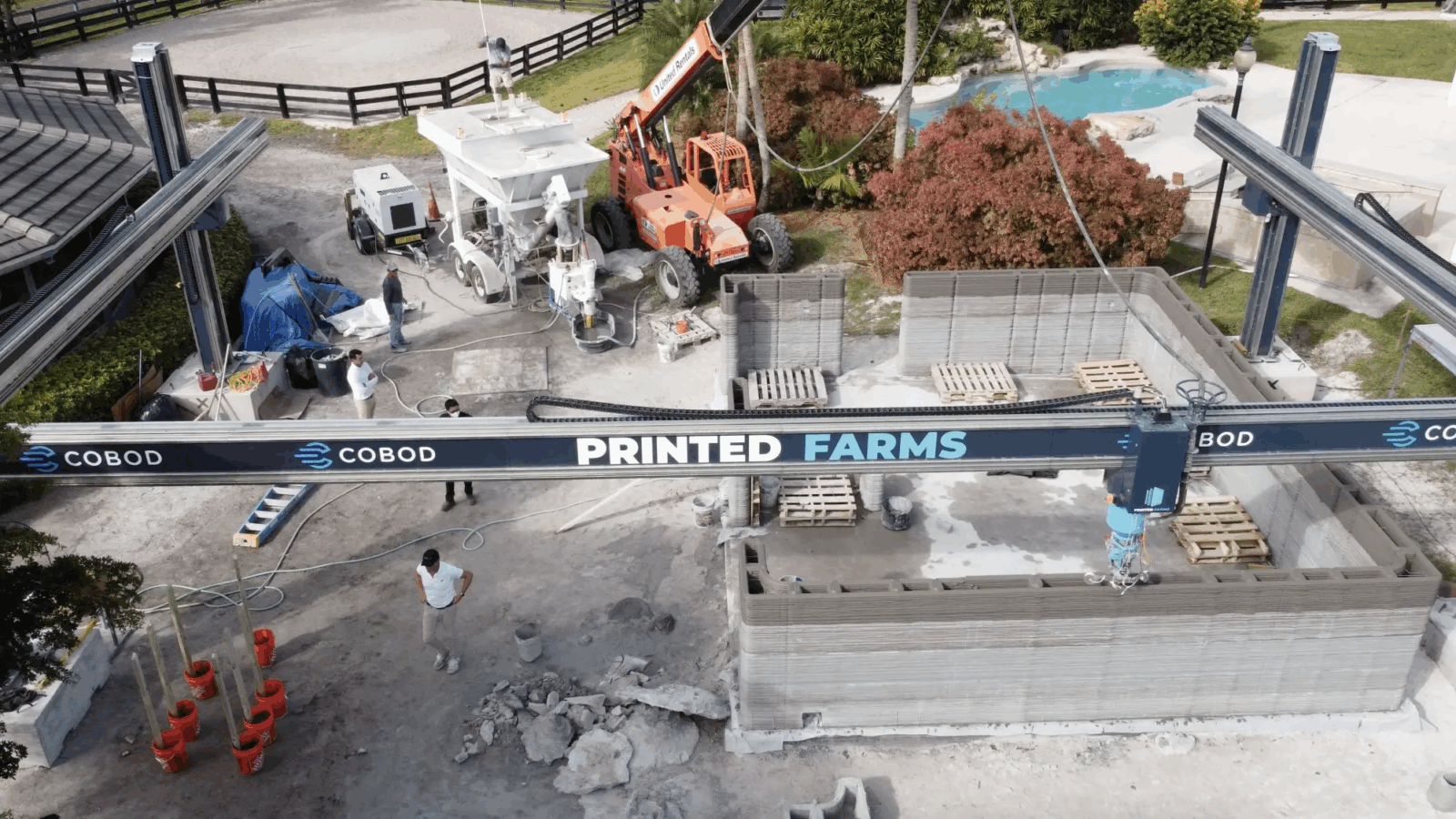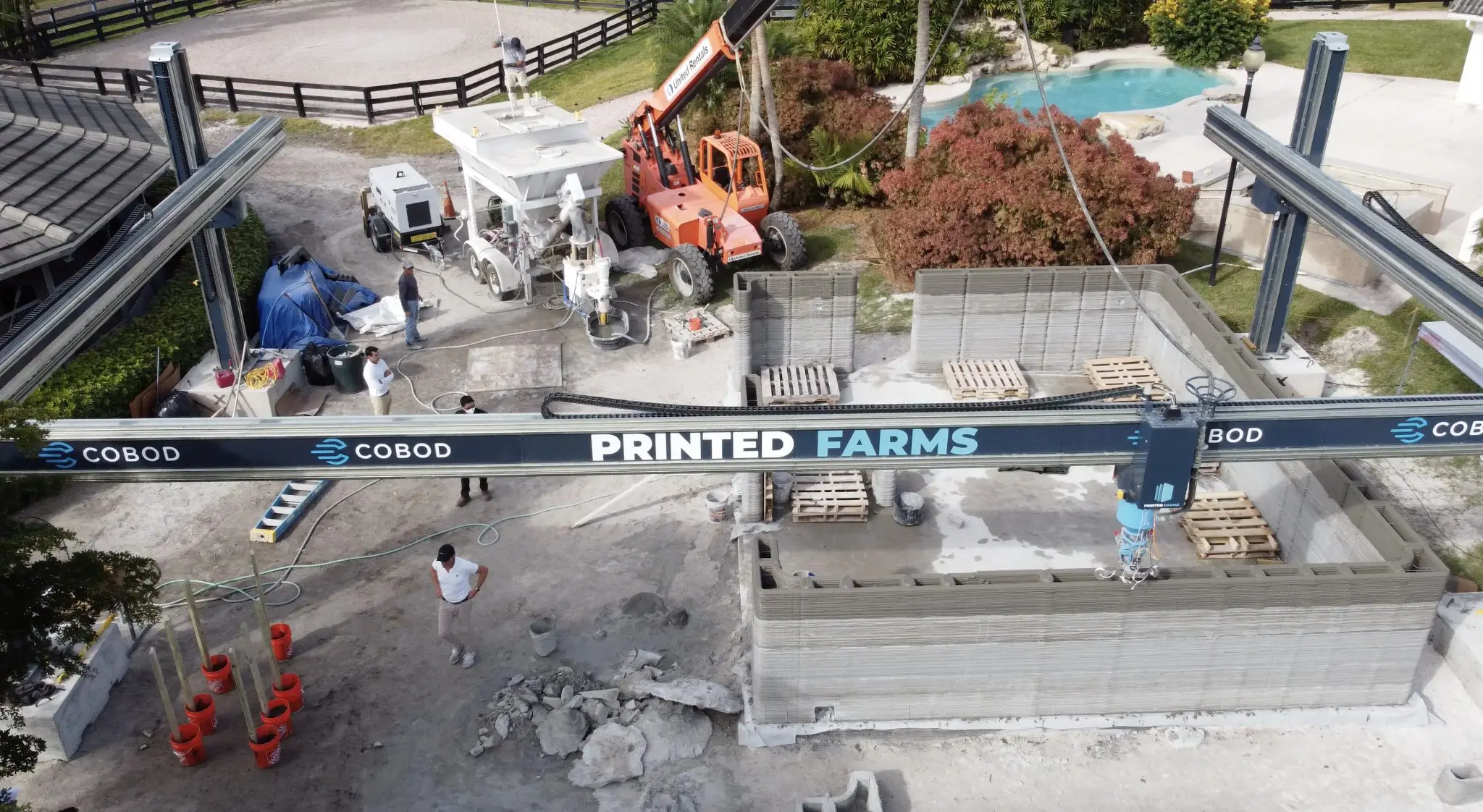Printed Farms is the first organization in the United States to get a Cobod Bod 2 Concrete 3D Printer. I got the chance to check out a job site near West Palm Beach, Florida. This project is a 30×30 agricultural building that will ultimately serve as storage for equipment that the owner has to manage their many horse stables.
The financier of the project, Jim Ritter, had realized the need for automation in construction when he funded a few construction projects around Florida. High labor costs and the difficulty of hiring skilled laborers made the choice of buying a concrete printer too enticing an opportunity to pass on. Jim brought on Fredrik Wannius as a cofounder who manages the day to day operation of the printer. Their current mission is to master the equipment they have purchased while they experiment with the best methods of building with this new technology. Like many companies they have already learned many lessons and prints in the future will benefit from the trial and error approach they are currently undergoing. A valuable lesson learned is from this project was that rebar going from the slab to the first layer of the building is unnecessary, subtle improvements like this will make the technology even more viable as its capabilities are better understood.
After purchasing their Cobod Bod 2 machine, Printed Farms was given lessons on both equipment and software operations. Cobod was very helpful in getting them started and it has been quite a good relationship thus far.
Fredrik came from a background in business and strategic management, yet now he works on-site utilizing the same hardware and programs as the engineers in this space. He is originally from Sweden so construction innovations are not a new concept for him. Fredrik has the attitude that anything can be learned through effort and concentration, from what I’ve seen he has become very proficient in operating the Bod 2.
Manufacturing on Demand
The first day I was there, they were doing first layer testing in order to properly calibrate the machine. Even if the ground is uneven, the Bod 2 is capable of compensating for those irregularities in its software. By testing the first layer Fredrik can confirm that the path won’t interfere with any of the rebar protruding from the slab and maintains proper distance from the print surface.
One of my favorite parts of the Bod 2 system is its ability to print onsite without the use of a tent. Setting up an external structure to keep the temperature and humidity homeostasis is a very costly endeavor which can hurt the upside of integrating this technology. Despite its massive size which is larger in length and width than the object being printed, the Bod 2 still weighs far less than the 30×30 building being printed and after disassembly, it can be transported by a single large vehicle.
Like every region, there are unique ways 3D building can maximize its benefit. For Florida, rising water levels are an increasing concern that this technology seeks to mitigate. In order to save Miami and other coastal regions on sea level, investment has been made into building sea barriers out of 3D printed concrete. In areas that are highly trafficked, 3D printing can be a great way to make a sea wall that is unique and visually appealing as opposed to a generic industrial-looking poured concrete form.
This is a great example of how the 3D printed construction industry is maturing. It is currently moving into an early adopter stage where pioneering organizations are acquiring these printers from the manufacturers to use in their own projects. Many of the 3D printed buildings we’ve seen are still experimental in one way or another but soon we will begin to see real estate readily available for tenants or investors that has been built with this technology.
* This article is reprinted from 3D Printing Media Network. If you are involved in infringement, please contact us to delete it.
Author: Jarett Gross



Leave A Comment